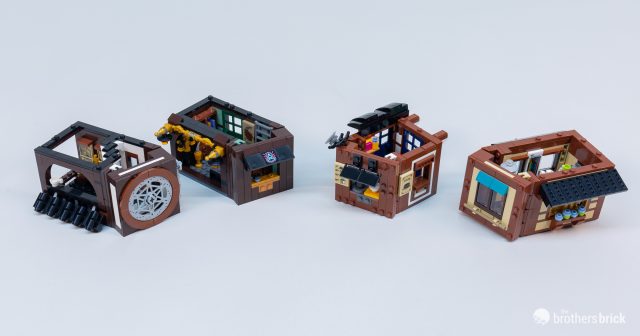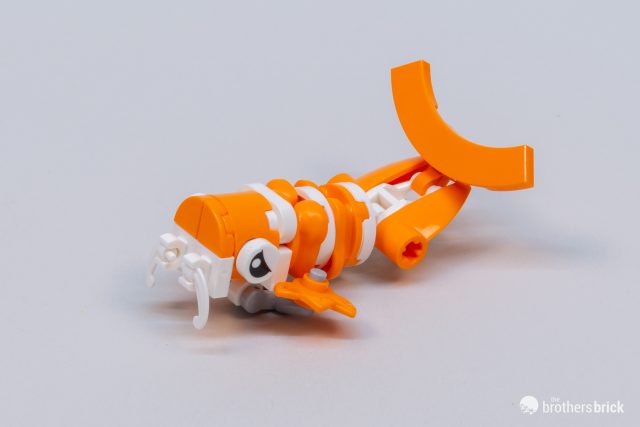Hands-on with LEGO 71741 Ninjago City Gardens, the biggest Ninjago set ever [Review]
When LEGO introduced the Ninjago theme back in 2011, no one could have guessed that it would come to be one of the company’s most popular themes. Now celebrating its 10th anniversary, Ninjago is getting its biggest set yet, 71741 Ninjago City Gardens. At 5,685 pieces, it’s the fifth-largest LEGO set ever, and the third entry into the cyberpunk modular buildings collection known as Ninjago City. A series of high-rise buildings containing all manner of city life, Ninjago City Gardens houses restaurants, a museum, an arcade, a dojo, and apartments, along with 19 minifigures. Ninjago City Gardens is available now for US $299.99 | CAN $399.99 | UK £274.99. Let’s see how this one stacks up to the previous Ninjago City sets.
The LEGO Group provided The Brothers Brick with an early copy of this set for review. Providing TBB with products for review guarantees neither coverage nor positive reviews.
The box and contents
The LEGO Ninjago Movie released Sept. 22, 2017, to a lackluster reception, and quickly faded from memory for all but the most hardcore Ninjago fans. For most of the rest of the LEGO fan community, its most memorable contribution was 70620 Ninjago City, which was released shortly before the film and along with the rest of that Ninjago wave bore the movie’s branding. Just a mere 9 months later when LEGO released 70657 Ninjago City Docks, the Ninjago Movie branding on the box already felt like an anachronism, and fans wondered if the Ninjago City modular buildings line would end there. After a hiatus of two and half years, though, the third set has arrived. Unsurprisingly, LEGO has dropped the Ninjago Movie branding, and box instead bears the Ninjago Legacy logo. The Legacy marque has been reserved for sets that are a re-imagining of early Ninjago sets, but Ninjago City Gardens breaks that trend too, since it’s not based on any previous set. (One other 2021 Ninjago set, 71742 Overlord Dragon, also has no predecessor.) Oddly, it’s also not part of LEGO’s new 18+ branding, which we’ve already seen cross between themes with even Star Wars Ultimate Collector Series sets getting the treatment in addition to Creator Expert sets. Instead, the Gardens bears a more accurate 14+ age recommendation (after all, the 18+ rating is purely for marketing rather than a true description of the set’s difficulty).


With 5,685 pieces in Ninjago City Gardens, only 4 other LEGO sets have ever had more pieces: the brand new 10276 Colosseum, the Star Wars UCS 75192 Millennium Falcon, the Harry Potter 71043 Hogwarts Castle, and the Creator Expert 10256 (or 10189) Taj Mahal. So naturally, the box is massive not just in height and width, but also depth. Like most large sets, some of the bags inside are in an inner plain white box, and to its credit, LEGO has sorted them so that everything you need to get started is in this white box–something we’ve long noted that LEGO should do. Bags 1-11, plus the baseplates, instruction manuals, and sticker sheets are in the inner box, while the rest of the bags are inside the main box. You’ll likely have to dump out everything to get started, but you won’t have to sort through all the bags; just grab the white box and go.


In total, there are 43 bags inside spread across 26 numbered steps, plus one additional unnumbered bag with some large elements, and seeing it all spread out makes for a daunting (and fun!) proposition.
The instruction manual is split into three booklets. Like Ninjago City Docks, there’s no behind-the-scenes content at the start of the instruction manual. Even though this set isn’t part of the new 18+ branding that LEGO is rolling out across themes, it would benefit from that treatment. There is at least a two-page spread at the start that gives names to the city’s various buildings and provides a translation guide for Ninjago’s script. You’ll also find a free Ninjago elements “poster” sandwiched between the manuals. It’s a fun freebie, but is printed on extremely thin high gloss paper, and feels more like a cover sheet than a poster.


Fittingly for a bustling cyberpunk city, Ninjago City Gardens is awash in signage of all shapes and sizes. Sadly, though, almost none of them are printed, which means you get not one but three hefty sticker sheets containing the 66 stickers you’ll apply throughout the build.



As for parts, there’s only one altogether new element to be found, and it’s an odd one. This interesting-looking piece is used on Ninjago City Gardens as a decorative flourish on a support pillar on the first level. But its true purpose is as an escalator chain link for minifigures and minidolls, and it’s slated to appear in March in the Friends set 41450 Heartlake City Shopping Mall, which features a full escalator. Ninjago City Gardens only includes two of them, so I mocked up a little miniature escalator using the tread links, which share a connection with the escalator links.


Beyond that, the only other new elements are recolors, of which there are many. I won’t list them all, but here are a few that caught my eye. First up is the Technic Gear Rack Housing, which arrives for the first time in sand blue. There’s just one in the set, and it’s used for the first-floor column that those escalator links attach to, and it’s used as a structural element only, not as part of a mechanism. There are also a significant number of the new 3×1 inverted arches that first hit the scene just a few weeks ago with 10278 Police Station, where they showed up in tan and light grey. They arrive here in black, and you’ll get 28 of them.

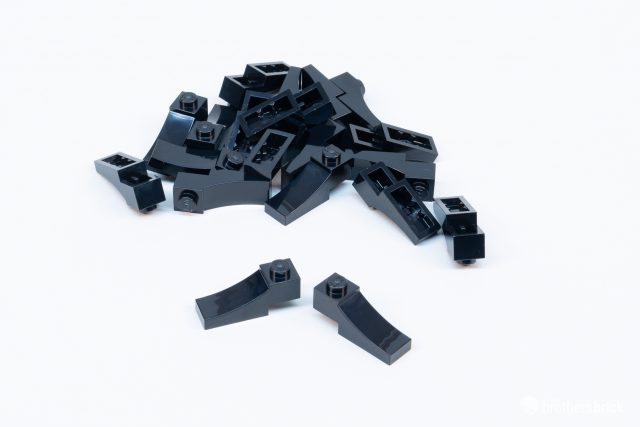
Then there’s the 1×3 brick with curved sides, which was used for the printed face of Dr. Fox from the Unikitty theme in 2018, but hasn’t been available outside of that. Here you’ll get just one that’s dark grey and unprinted, though it is covered with a sticker to become a TV. One update that’s sure to excite fans is the classic 6×5 leaf, which gets not one but two useful new colors added to the lineup: lime green and yellowish green, and you’ll get 10 in each. Finally, there’s the Ninjago weapons multipack, which showed up in bright green. It appears in one other set, Ninjago 71735 Tournament of Elements, which also just released.



The last bit that’s notable is the 1×2 trans light blue tile, which notable only because of its quantity. With the 1×2 tile making up the water that fills the canals, the three Ninjago City sets claim the top three slots for sets with the largest quantity of this piece. But surprisingly, Ninjago City Gardens edges out the water-focused Ninjago City Docks by a small margin, clocking in with an enormous 328 of the piece. Most of them are contained in a few mostly pre-sorted bags. Now, let’s get to building.
The build
Unlike Ninjago City Docks, the two baseplates that make up Ninjago City Gardens’ foundation are kept distinct and modular, allowing them to be rearranged. The build starts with the main structure on the 32×32 dark grey baseplate, and only moves to the smaller island shrine on the 16×32 baseplate once the main build is complete. Like the other Ninjago City modulars, the water gets a pattern of green and black plates beneath the tiles, and one of the small islands is visible in the back corner. There are also some hidden details, like the piping seen on the left side of the foundation here running toward, and then behind, the culvert. Some of the piping can be accessed in the finished model once the building on top is removed (which it is designed to be), but the bit behind the culture is only visible through a tiny slit by the sidewalk and is basically invisible. But it adds a nice touch of realism to know that the drainpipe is actually connected to something, even if you can’t see it.
 Right off the bat you’ll get your first taste of tedium placing down the trans light blue 1×2 tiles. You have to be exceedingly careful to place them correctly, because if you lose the pattern you’ll quickly get into trouble and end up with the last piece not fitting. The island has some lovely details on it, though, such as a small tree with green claws for needles. The two small stonework lanterns hide the Technic pin connectors that keep the module in the system.
Right off the bat you’ll get your first taste of tedium placing down the trans light blue 1×2 tiles. You have to be exceedingly careful to place them correctly, because if you lose the pattern you’ll quickly get into trouble and end up with the last piece not fitting. The island has some lovely details on it, though, such as a small tree with green claws for needles. The two small stonework lanterns hide the Technic pin connectors that keep the module in the system.
 Once the bare foundation is down, along with the base of the big tree that dominates the city corner, the rest of the main city block is highly modular, with each room being a self-contained mini build that is then stacked onto the model (and can be removed just as easily). The first building to be placed is Ronin’s Pawn Shop, with some hidden treasures beneath the floor. The first few floors of Ninjago City Gardens are separate buildings that sit at opposite ends of the L-shaped foundation. Higher up, the structures will join.
Once the bare foundation is down, along with the base of the big tree that dominates the city corner, the rest of the main city block is highly modular, with each room being a self-contained mini build that is then stacked onto the model (and can be removed just as easily). The first building to be placed is Ronin’s Pawn Shop, with some hidden treasures beneath the floor. The first few floors of Ninjago City Gardens are separate buildings that sit at opposite ends of the L-shaped foundation. Higher up, the structures will join.
The Pawn Shop is packed with goodies, including bookshelves, weapons, and paintings.
Despite most of the buildings being quite small, they are intricate builds and frequently use innovative techniques. In a 5,600-piece set that is certain to take you days to build, there are far too many clever bits to point out all of them, so I’ll just touch on some of the highlights, starting with the unnamed restaurant that occupies the other half of the bottom floor across from the Pawn Shop. It features a complex build to use the curved back cover of a book as the serving counter.
The restaurant still manages to fit a stove, sink, and a few other details in despite its tiny footprint.
But Ninjago City Gardens takes the interest build techniques a step further. Unlike the two prior sets, none of the modules are rectangular. Although the first few floors are structures that sit perpendicular to each other, their inner walls are angled to face each other. This means the rooms on the lower levels are irregular shapes.
The rooms on the second floor are the Tea Room with Tea Time Balcony, and the Ninjago Fan Flat. The Tea Room features another of the beautiful round windows like we saw in Ninjago City Docks, but this time the panes are made with the Technic motorcycle brake disk, and it lends the perfect steampunk/techno vibe to an otherwise very traditional module. The Ninjago Fan’s flat is appropriately packed full of Ninjago collectibles, from a tiny Destiny’s Bounty on the shelf to a bedspread covered in ninjas.


After the first two floors are stacked, it’s time for the lower sidewalk to connect the buildings. Even the big L-shaped slab of grey plates has a surprising amount of detail, with lots of signage and even a hanging microscale model for the Ninjago Fan’s flat.
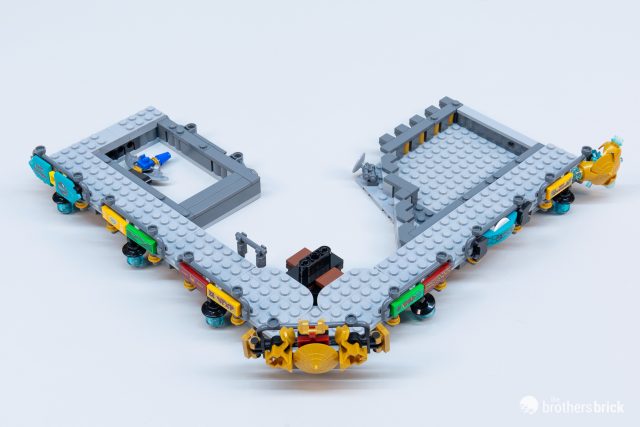

As we’ve come to expect from Ninjago City modulars, the roofs are a treat, and a chance for the designers to show off clever innovations. Among the most interesting one is found on the Ice Planet Ice Cream Shop on the third floor, and it’s made of stacked cleavers, with the cleaver blades making the flat roof tiles. And while it’s relatively simple, the rounded front window on the shop is a wonderful touch.


The interior of the shop is no less excellent, though, packed with a surprising amount of detail in a tiny footprint. And meanwhile, the back of the ice cream shop gets one of the oddest roofs, made with video game controllers.


Next door, Chen’s Noodle Shop has a small cook station, menu board, and just enough room for a table.
Along with Chen’s Noodle Shop, the Ice Cream Shop makes up the third-floor structure. The tree will extend above this, and connects to the third-floor walkway. We can really make out the general shape of the buildings now.
The upper level of the tree is connected later on in the process, but let’s look at it now. The tree’s lower half is made with Technic support columns and standard bricks and arches, while the outer limbs are connected with clips. I found that the lower-level limbs were too heavy for the clips, and they didn’t like to stay where I’d position them, falling back to a drooping stance at the slightest bump. The upper part of the tree uses brown animal tails to make a tentacle-like spread of branches, and it works perfectly. Once attached, the treetop is part of the walkway module.


The fourth floor is where it all comes together–literally. The fourth floor is a single structure spanning both buildings. The majority of it houses the Ninjago Museum of History, while the Student Flat takes up the left corner. The center section of the building is built on a clever diagonal, with the outward-facing wall of the museum built as a self-contained unit that’s slotted into the rest of the building. The wall is a masterpiece of LEGO geometry, but the relics inside are just as fun. Minifigure angular stands make perfect spotlights for the displays. The best detail, however, is the center display case that holds the dragon hilt. The base of the case is a treasure chest bottom. But instead of a standard treasure chest lid, a windowpane is slotted into the hinge–a connection I’ve never encountered before.
Once the wall is completed, it slots into the rest of the museum.
The museum has a neat design with a lobby with a rotating rack for postcards, a cash register, and turnstyle, while the displays have a variety of splendid micro builds from through Ninjago’s history.
The Student Flat at the end of the museum is filled with just as much detail as the museum itself. The outside gets a mishmash of green tiles for a brickwork effect, while the inside has lots of household items. My favorite detail, however, is the window planter, which uses an upside-down skirt as a tiny planter box.
The inside is outfitted for an art student with a small work area with an easel and paintbrush, desk, bed, and a few other details.
Finally, there’s just the top floor and tower to assemble. On the left is the rooftop zen garden with a teahouse. Although it’s one of the simplest buildings, it does feature another clever roof made of black treasure chest lids. Beneath the roof there’s an orange space helmet, which I believe is standing in for a bell, though I’m not positive.


Even the Tea House is not without its secrets, however. There’s a safe set in the base of the building, holding a single cheese slope. I’m not clear what the treasure is, but it’s a great detail regardless.
 There’s also a flying bike that attaches to the Tea House by way of a transparent rod.
There’s also a flying bike that attaches to the Tea House by way of a transparent rod.
In the middle, the museum’s open atrium features a domed glass roof with a brilliant dragon skeleton hanging from the rafters. A flowering tree is sprouted out the side of this module.


Then on the right side, there’s the ninjas’ hangout. The ladder in the back retracts up to block unauthorized access, while the outer wall has a slot for a movie poster. Like the previous two Ninjago City sets, there are a few options for the movie posters, with the extra stored in a cubby in the tower.


The hideout is fully loaded for fun with an arcade machine, video game console, recliner, and even a telescope out on the balcony. It features some of my favorite furniture in the whole set. The arcade machine even functions. Flicking the Technic pin “joystick” causes the printed 1×2 tile ninja warrior inside to jump up, “attacking” the dragon.
 A giant koi hangs on the outside of the lair and is a lovely build on its own.
A giant koi hangs on the outside of the lair and is a lovely build on its own.
Finally, there’s only the tower left. The tower has a very minimal interior–there’s room inside only for storing the extra movie posters, and a seat with a few computers as the ultimate ninja control room. But the build is nonetheless detailed and complex, with large wedge slopes making a diamond pattern on the outside. The upper level of the tower is rotated 45 degrees, allowing the slopes to interlock and creating a very distinctive look that’s one of the defining traits of the set.


Finally, there’s just one thing left for the main build, and that’s add-on balconies. Because Ninjago City is a modular system, the walkways all need to connect to each other when the sets are placed next to each other. The original Ninjago City set solved this by placing an easily removed fence piece at the end of the walkways. Ninjago City Gardens goes a step further and includes a few purpose-built endcaps that make the city look complete when it’s on its own, while being easily removed when placed next to another building.
 With those in place, the main structure of Ninjago City Gardens is complete.
With those in place, the main structure of Ninjago City Gardens is complete.
And that means it’s time to start on the second baseplate! Just like the first, the Temple Island starts by laying out the black and green plates that lie under the water tiles. You can also see here that there’s a large cavity in the middle of the island beneath the temple. Although there’s no particular use for this given in the set, it’s a perfect hiding spot for treasure. The temple can be popped off for easy access.


The Temple Island comes together quickly, though even more than on the main building, you’ll need to watch carefully how you place the 1×2 water tiles, because there are a lot of them. The segment keeps up Ninjago City’s modular system by including the Technic connecting pins on tiny stone footings. Obviously, there’s no overhead walkways to connect on this section, but it the lowest level walkways do line up properly.
And now, 5,685 pieces later, we’ve got Ninjago City Gardens in its entirety.
The completed model
There’s not a lot I can say about the model as a whole that I haven’t already touched on, but one thing is worth going back to look at, and that’s the roofs. As I mentioned early in the review, clever roof designs have become something of a hallmark for Ninjago City buildings, and the gardens turns that dial to 11, with almost every roof being not only unique from each other, but also different from previous sets. In total, I counted 11 unique black tiled roof designs, plus a twelfth if you include the temple next door.











The whole set breaks down easily into 18 pieces (I forgot to remove the temple from the island in the image below). This means that the set is an amazing playset, allowing access to every single area of the build. I don’t know how many kids will be getting a range-topping $300 Ninjago set, but those who do (and a few adults, for sure) will absolutely enthralled with how easy it is to act out stories throughout the multi-level set.
 Since Ninjago City Gardens is part of a modular series, many fans who will be purchasing will likely have the previous sets as well. So how do the gardens fit in with the existing lineup? First, I tried “official” order of placing them in release order from left to right. It looks splendid and makes an impressive city considering that we’re only looking at three LEGO sets here. Of course, combined they’ve got over 14,000 pieces, so it’s no wonder they’re impressive.
Since Ninjago City Gardens is part of a modular series, many fans who will be purchasing will likely have the previous sets as well. So how do the gardens fit in with the existing lineup? First, I tried “official” order of placing them in release order from left to right. It looks splendid and makes an impressive city considering that we’re only looking at three LEGO sets here. Of course, combined they’ve got over 14,000 pieces, so it’s no wonder they’re impressive.


The sidewalks all line up perfectly with one another and the buildings have a wonderfully ramshackle effect that looks layered and full of history. Despite loving Ninjago City Docks, I’m less keen on the way the skyline dips down so low in the middle. It takes away from the crowded, stacked, Kowloon city vibe that cyberpunk so often plays on, and which both of the end models embrace. I much prefer the way the original model joins up with Ninjago City Gardens to create a dense block. Of course, you could then attach the docks to one of the back sides.
The minifigures
No city is complete without its citizens, and Ninjago City Gardens has plenty. According to LEGO there are 19 minifigures, if you include the robot janitor Scoop. By any fan’s estimation, though, there are 21 minifigures, not counting Scoop, thanks to several minifigures built into the scenery. Let’s take a look.
First up is the golden Sensai Wu. LEGO has been including special golden minifigures in a number of Ninjago sets this year to celebrate the theme’s 20th anniversary, such as 71736 Boulder Blaster. Like the others, Sensai Wu doesn’t fit into the set itself, but is more of a collectible bonus like getting a baseball card in your cereal. He comes with his own display stand complete with a Ninjago 10th Anniversary tile.


For the regular minifigures, let’s start with the ninja crew. All six of the main heroes are included in this set, though they’re not all from the same time period. For instance, Lloyd appears as the younger version from Season 1, while Cole, Nya, and Jay are just wearing street clothes from recent seasons. All six have double-sided heads with alternate expressions.
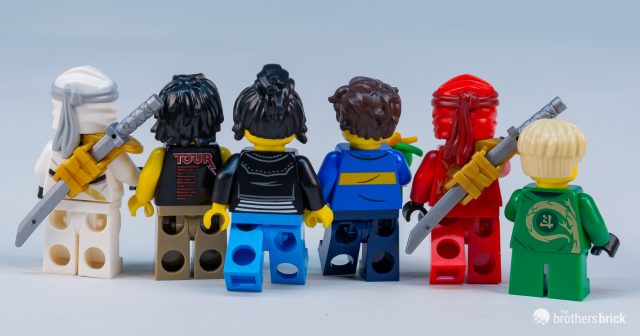

Besides the main heroes, though, there is a bevy of regular townsfolk, many of them having appeared in previous sets or the TV show. A few, like Christina the Ninjago Fan (in the green Lloyd hoodie) are new to this set. About now I should admit that I am not a Ninjago expert, and don’t regularly watch the TV show or keep up with the plotlines of the sets, so I’m not going to attempt to go into detail on them. Likely, if you care about the backstory on these characters, you’ll know them better than I do. Or, if you’re like me, you’ll appreciate the characters as being interesting townsfolk whether or not you know their names. Of course, the box does provide names for the whole cast. Let’s kick it off with Kaito, Eileen, Tito, Christina, and Misako, Lloyd’s mother. Only Kaito, Christina, and Misako have double-sided heads with alternate expressions.


Next up we have a crew of professionals. First, there’s Cece the jewel thief, whose flying hoverbike is perched near the top of the city. Then there’s an unusual character that some of you may recognize from his own line of City sets and movies, before he was introduced to the Ninjago universe recently. He appeared in one previous Ninjago set in 2019 and is identical here. Then there’s Hai from the Ice Planet Ice Cream Shop, along with Mei. All of them except Hai have alternate expressions.


And then lastly, we have a rag-tag bunch starting with a pair of long-time Ninjago characters: Ronin, whose pawnshop is on the first floor Ninjago City Gardens, and the Mechanic with a massive buzzsaw. Then there’s Scoop the janitorial robot who cares for Ninjago City, and Sensei Wu’s dog. Scoop is a great brick-built design that utilizes a baby carrier stuffed with trans red 1×1 plates for the face.


Those are all of the official minifigures listed on the box, but as I mentioned earlier, there are a few more included. A stone statue of Zane stands on the Temple Island, a caricatured Asian minifigure who’s the figurehead for Chen’s Noodle Shop, and Jay’s blue suit, which just has a blank head inside.
Conclusion and recommendation
Some LEGO sets are difficult to sum up tidily for our audience and make a recommendation on whether you should buy it or wait for a sale, or pass on it altogether. But Ninjago City Gardens is one of those delightful sets that makes my job easy in that department, because no matter what angle you approach it from, it’s an excellent set. If you’re a Ninjago fan, it’s chock full of great references and history and gives us the biggest slice of Ninjago City yet. If you’re not particularly a Ninjago fan, but love sets with a complex and engaging build full of novel part usages and clever details, then Ninjago City Gardens is the best minifigure-scale example in LEGO’s current lineup.
And if you don’t care about either of those things and just want more LEGO for your own build, then Ninjago City Gardens still has you covered. The price-per-piece for the set’s 5,685 elements comes out to just $0.05 per piece, making this set a staggeringly cheap bargain that’s surpassed only by the likes of oddball sets such as 31201 Harry Potter Hogwarts Crests. And unlike a mosaic set whose element variety leaves something to be desired, Ninjago City Gardens has an enormous array of pieces–the inventory in the manual spans 10 pages! If you can afford to drop $300 on a LEGO set, you’ll find few ways to get more bang for your buck.
But ultimately, Ninjago City Gardens isn’t great because it’s a good parts pack. It’s great because it’s clear that the design directive for LEGO Designer Markus Rollbühler was to make an excellent set the way a fan would–with care given to the details and nothing spared if it meant a better result. If this is what we have to look forward to in the next ten years of Ninjago, then bring it on.
71741 Ninjago City Gardens includes 19 minifigures 5,685 pieces and is available now for US $299.99 | CAN $399.99 | UK £274.99. Although it is an exclusive product from LEGO, it may also be available from third-party sellers on Amazon and eBay.
The LEGO Group provided The Brothers Brick with an early copy of this set for review. Providing TBB with products for review guarantees neither coverage nor positive reviews.









































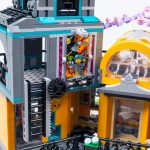




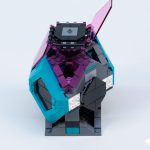
















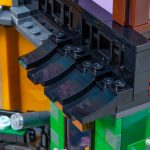



























The post Hands-on with LEGO 71741 Ninjago City Gardens, the biggest Ninjago set ever [Review] appeared first on The Brothers Brick.









